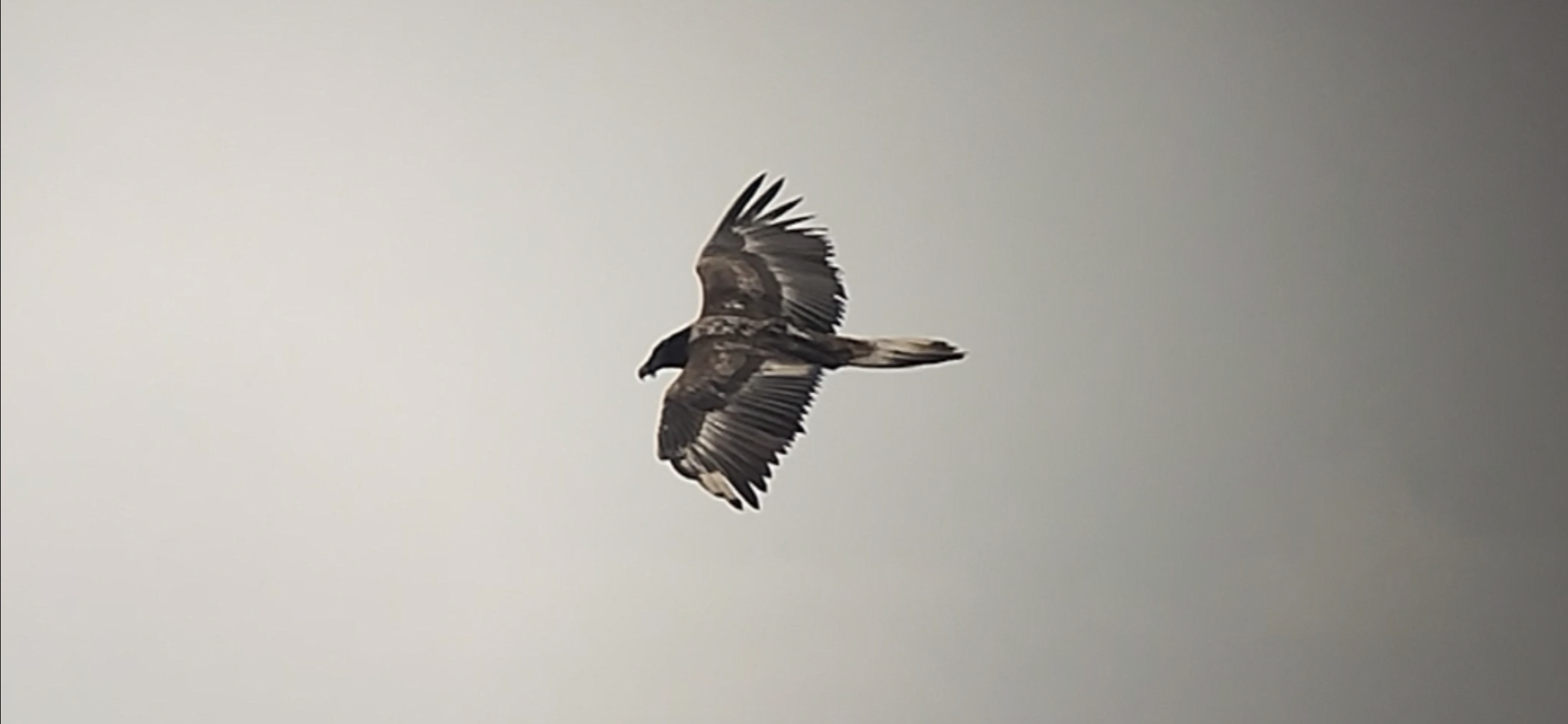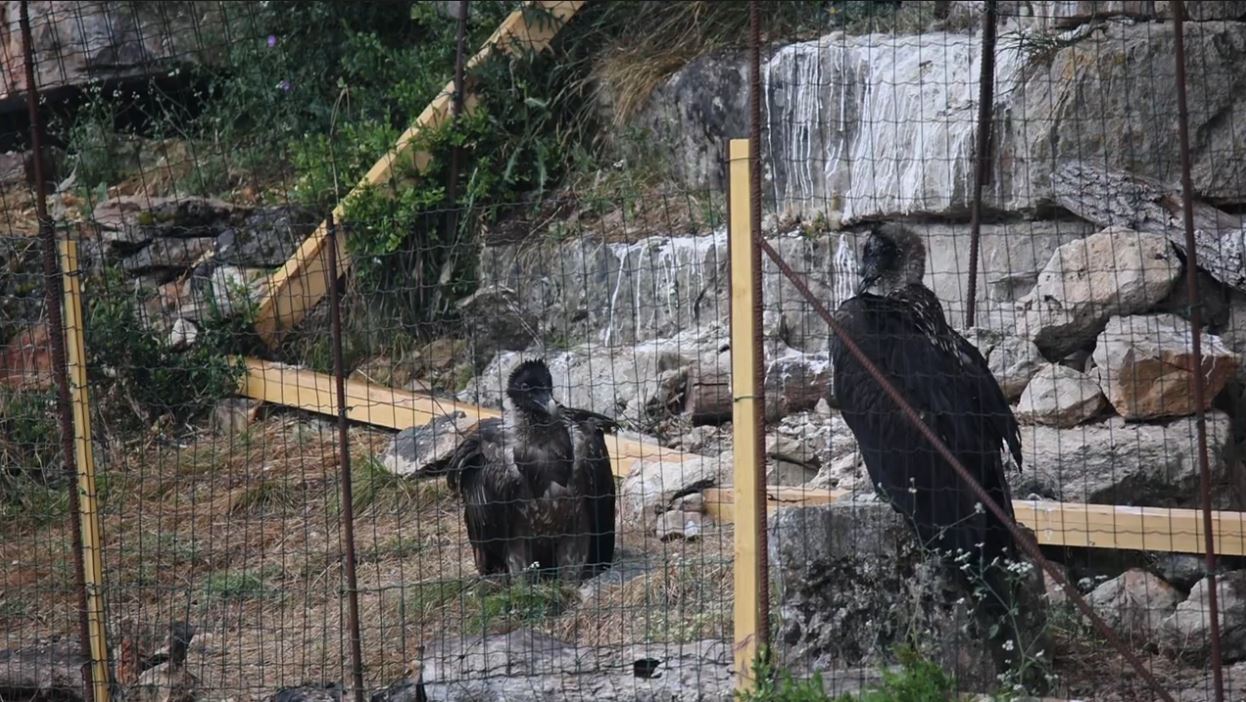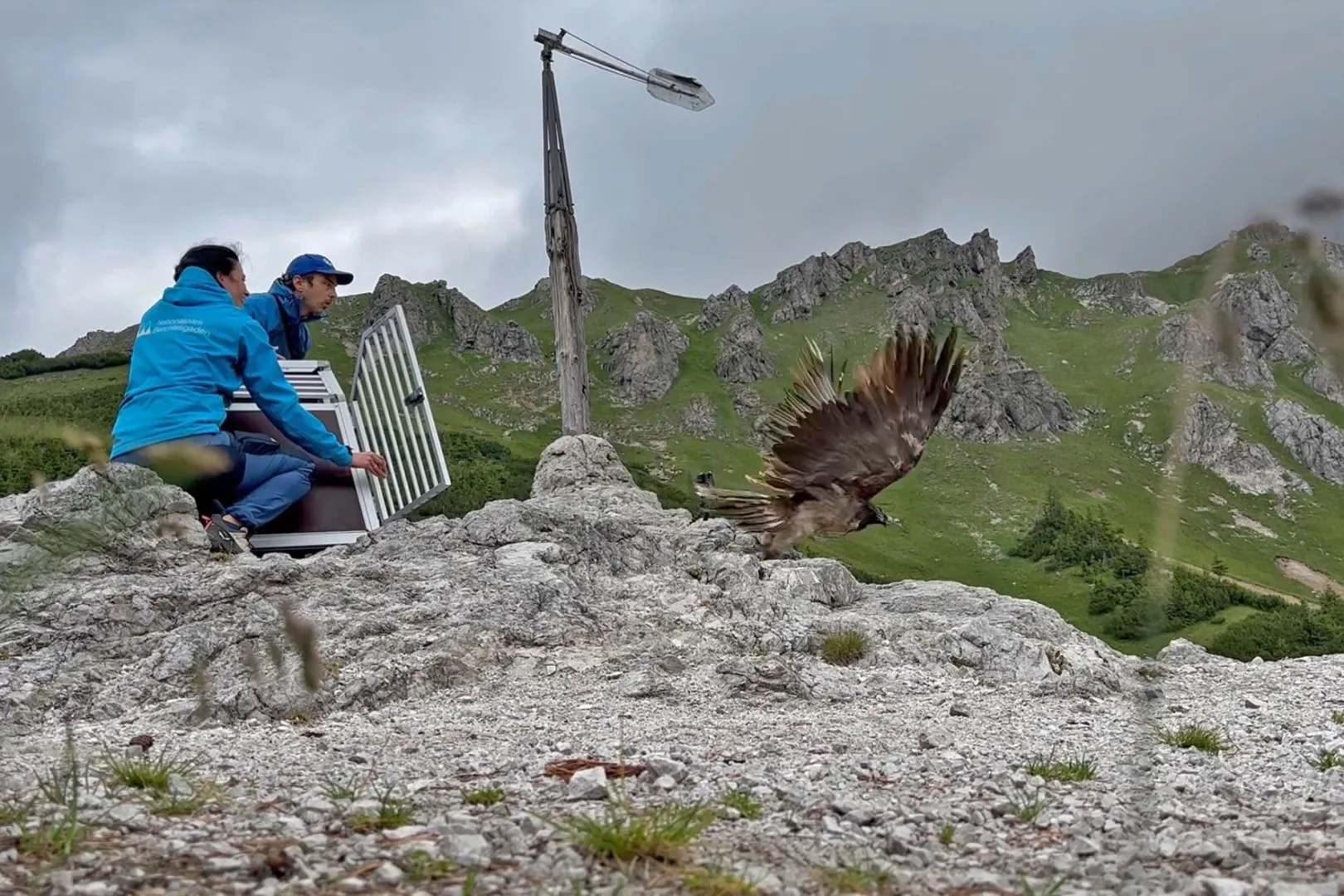
In the latest edition of LIFE GYPCONNECT‘s newsletter ‘La Plume due Life’, Bearded Vulture experts discuss captive breeding, upcoming releases, breeding results in the wild, and many other interesting topics relating to the species and its conservation in the project area and beyond. In this blog post, you can read the English summary, consisting of the key highlights, and download and review the original newsletter available in French below.
Progress of Bearded Vulture captive breeding season 2020/21

The Bearded Vulture Captive Breeding Network, coordinated by us at the Vulture Conservation Foundation (VCF) on behalf of EAZA’s EEP (Bearded Vulture EEP), strives to breed as many chicks as possible every year for conservation purposes. This breeding season has been in full swing for months now. As of the end of March 2021, 43 Bearded Vulture pairs have laid 64 eggs, of which 26 have failed. Of the 38 remaining eggs, 21 chicks hatched, and 18 survived and are alive. There are still 17 eggs with a chance to hatch.
Preparing for the upcoming release season
This year, Bearded Vulture reintroduction efforts in the Grands Causses will transpire for the 9th consecutive time! The local LIFE GYPCONNECT teams are currently preparing for the next release of chicks, which will take place in the Gorges of Trévezel (commune of Nant), Aveyron. At the end of April, the local project team will receive the first three chicks that hatched within the Bearded Vulture EEP this breeding season. LPO Grands Causses and Parc national des Cévennes already recruited five people to complete the technical teams that will monitor and follow the progress of these young birds. Currently, the hacking platform can accommodate up to 5 birds simultaneously following the expansion work done in 2020.
The Vercors Regional Nature Park is preparing to receive birds but what about the Baronnies? This year, the Baronnies massif is not a priority for the release of Bearded Vultures. Indeed, for the department of Drome, the priority site is the Vercors. However, if, as in 2017 and 2019, a sufficient number of young captive-bred Bearded Vultures are available within the Network, then Vautours en Baronnies will again be a candidate to host two new birds.
How many Bearded Vultures are present in the Grands Causses?
In 2020, five young birds took flight in Aveyron and Lozère in the southern Massif Central. Various events impacted the first months of flight for these vultures. Indeed, after the death of Dolomie in October 2020, who was a victim of an illegal shooting at Fraissinet-de-Fourques, several rescue and rehabilitation missions were necessary, notably for Ophrys, Eglazine and Aven. After their release, these young birds have been exploring the surrounding areas of the release sites and recently begun undertaking more extensive movements outside the Grands Causses, thanks to the improved weather conditions.

In addition to these young birds, Cevennes, a male released in 2019, is also currently present in the Grands Causses since his return from the Pyrenean massif (Aude) in June 2020. Layrou and Adonis, the two adults forming a pair, remain faithful to the Jonte gorges and the Méjean plateau. Even though these two individuals are both males, the LIFE GYPCONNECT team observes mating behaviour and nest building every year. Since 10 February, a mysterious sub-adult individual was also observed in the Jonte gorges and the Causse Méjean. A few days later, thanks to the identification rings, the team realized the Bearded Vulture was Calandreto, a male released in 2017 who has already visited the Pyrenees twice in 2018 and 2019. Unfortunately, this bird lost its GPS transmitter in the Spanish Pyrenees, making it difficult to track him. The last time he was observed before was in March 2020, in Lozere, until his return back to the Grands Causses.
Download and review the ninth edition of the LIFE GYPCONNECT’s newsletter (in French) to learn more about conservation actions taken to protect the species and other news, including updates from some famous Bearded Vulture pairs.
LIFE GYPCONNECT

Led by the League pour la Protection des Oiseaux (LPO), the LIFE GYPCONNECT project aims to establish a breeding population of Bearded Vultures in the Massif Central and Department of the Drôme. Releasing captive-bred Bearded Vultures into the wild at sites such as the Parc Naturel Régional des Grands Causses, Parc Naturel Régional des Baronnies Provençales and Parc Naturel Régional du Vercors will create a core population that will connect the two populations of the species in the Alps and Pyrenees. To facilitate movements between the new population and the Alpine and Pyrenean populations the LIFE GYPCONNECT team is creating a network of supplementary feeding stations, and tackling threats such as poisoning, and collision and electrocution with the electricity infrastructure.




